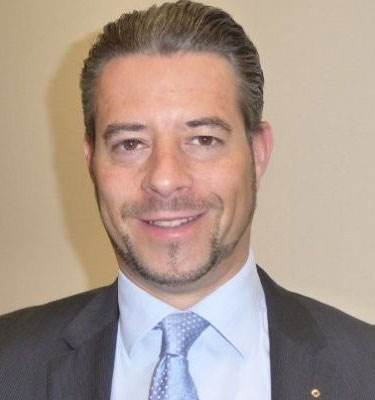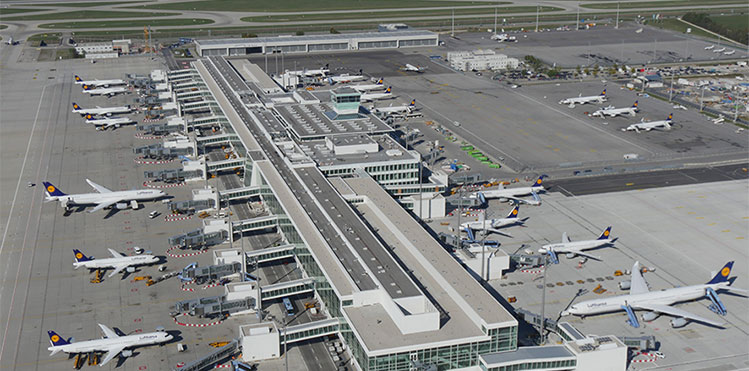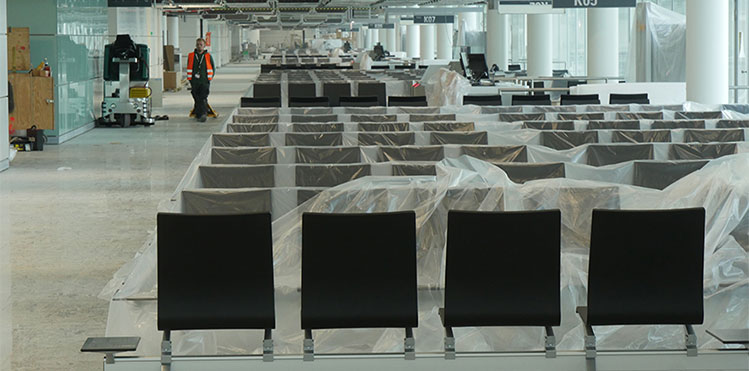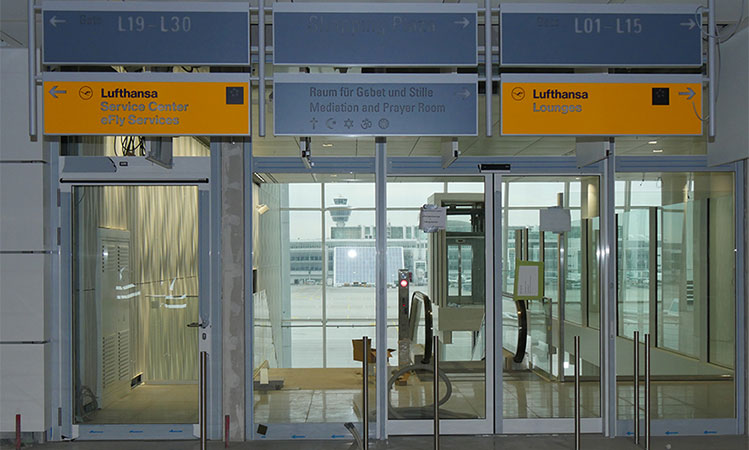Development of Munich Airport’s new satellite terminal is entering its final stages, with the Operational Readiness and Airport Transfer (ORAT) programme well underway. The €900 million investment includes the satellite terminal, extension of the apron layout and modification of the baggage sorting system, and is designed to provide a real improvement in passenger comfort and quality of service once complete in April 2016.

Philipp Ahrens, General Manager Terminal 2, Munich Airport: “The building has been planned and constructed to be fully flexible, serving all types of traffic (Schengen, non-Schengen and non-EU arrival traffic) on three different levels, following the same philosophy as in Terminal 2.”
Construction of the new satellite began in April 2012 to the east of Terminal 2. The building will add capacity for a further 11 million passengers to the Terminal 2 system and 27 contact stands, increasing the total to 51, for Lufthansa and its Star Alliance partners. Like Terminal 2, the satellite will be operated through a joint venture between Munich Airport (60%) and Lufthansa (40%).
When constructing Terminal 2, the next phase – the satellite – had already been considered in the planning process. As the satellite is a midfield building, it is separated by three parallel taxiways from Terminal 2. The tunnels under the apron, which connect the satellite with Terminal 2, will be used for the passenger transport system as well as baggage transport between the two buildings. These tunnels had also been built during the construction of Terminal 2. The baggage sorting system in the east of Terminal 2 was constructed in a way that it could be the future baseline for the satellite building. Meanwhile, the next extension is already foreseen in the planning progress – a “T-Stick” towards the east for an additional six million passengers.

The satellite is a midfield building and is separated by three parallel taxiways from Terminal 2. The tunnels under the apron, which connect the satellite with Terminal 2, will be used for the passenger transport system as well as baggage transport between the two buildings.
Philipp Ahrens, one of the General Managers in charge of the satellite project, tells Airport Business that “construction of the building is finished and currently the interior fittings are ongoing – mainly the retail and gastro units.” Testing of the underground passenger transport system, beneath the apron, is also underway. The automated people mover connecting the main terminal building with its satellite will have a capacity of 9,000 passengers per hour and direction.
Ahrens explains that the ORAT programme commenced in November with 32 trial days (two per week) in total, out of which internal trials were carried out until Christmas. “From January 2016 onwards, external trial passengers will be invited to join in as well to test the processes. The satellite will eventually be ready for operation in April 2016.”
Terminal 2 currently has a capacity of 25 million passengers, which has been reached for each of the past four years, so there is an urgent need for more capacity. “Another important goal was the increase of quality for the passengers, especially when boarding or disembarking, by creating 27 additional contact stands,” Ahrens adds. “The building has been planned and constructed to be fully flexible, serving all types of traffic (Schengen, non-Schengen and non-EU arrival traffic) on three different levels, following the same philosophy as in Terminal 2. Since the Terminal 2 system is exclusively reserved for Lufthansa and its Star Alliance partners, the satellite building aims at seamless transfer processes.”

The Operational Readiness and Airport Transfer programme commenced in November with 32 trial days (two per week) in total, out of which internal trials were carried out until Christmas. From January 2016 onwards, external trial passengers are participating to test the processes. The satellite will be ready for operation in April 2016.
“Continuously improving services for airlines and passengers”
The satellite terminal will also feature so-called remote collecting gates. This means that, from six gates on Level 03, passengers with tight connecting times can be transported on separate buses from the satellite to a remote position to secure connecting flights and improve the overall transfer experience. Eligible passengers are those travelling between Schengen destinations.
There will be 19 retail areas on both departure levels, with a focus on premium brands to complement the luxury offer in Terminal 2. Travellers can use the passenger transport system to move between the retail areas in the main terminal and the satellite.
The passenger experience will also be enhanced with free ‘work & relax’ zones, family areas, charging areas for mobile devices, and WiFi connectivity. Meanwhile, the commercial concept will be augmented with digital media walls. The new market place area surrounding the apron tower will be the commercial heart of the building, reflecting the city of Munich and Bavarian culture.
“Our aim is to continuously improve our services for the airlines and their passengers,” Ahrens says. “The new satellite will definitely maximise convenience for the guests because the 27 new contact stands will offer easy access from the gates. Passengers who start their journey from the satellite, therefore, do not need a bus transfer to reach their planes. That means they have even more time to spend in this fascinating building and can enjoy the large variety of attractive shops and restaurants.”

Like Terminal 2, the satellite will be operated through a joint venture between Munich Airport (60%) and Lufthansa (40%). The building will add capacity for a further 11 million passengers to the Terminal 2 system and 27 contact stands, increasing the total to 51, for Lufthansa and its Star Alliance partners.
Munich Airport is also committed to environmental innovation and is currently Airport Carbon Accredited at Level 3 ‘Optimisation’. Modern scavenging air ventilation technology will be used for climate control in the new satellite. The so-called double climate façade will work as a climate buffer between the outer shell of the building and the inner part, combined with lighting incorporating LEDs and dimming technology. Ahrens explains that these initiatives will result in CO2 emissions in the satellite facility being 40% lower than in the two existing terminals.
Looking further ahead, the next big step for the airport will be the extension of Terminal 1 towards the apron. The project is still in the early planning stages, but we do know that it will create more space for gates, waiting areas, shops and restaurants.







